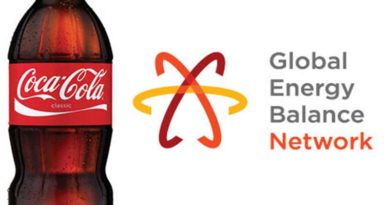Low calorie vs low carbohydrate for T2D remission (DiRECT vs Virta)

Executive Summary
* There are two dietary ways to put type 2 diabetes (T2D) into remission – transient very low calorie and sustained very low carbohydrate. The DiRECT study presents the evidence for the former, whereas the Virta study presents the evidence for the latter.
* Both studies involved similar numbers of people (300 DiRECT/ 350 Virta). They had some differences in exclusions and baseline measures, which are detailed in this note.
* Results are available for DiRECT and Virta after one year and two years enabling comparison. The primary outcomes differed slightly but both involved weight loss and reduced HbA1c.
* DiRECT researchers stress that their study was randomised whereas Virta wasn’t. Upon examination it transpired that neither study was randomised to the individual (DiRECT was randomised by practice, and Virta was assigned by practice). In both cases, patients knew whether they would be offered the intervention or control before agreeing to participate.
* Comparing the two studies by protocol, Virta included more complex patients and patients who had had T2D almost three times longer than DiRECT patients. Virta also differed from DiRECT by using real food consumed to satiety vs soups and shakes composed of purified nutrients that required severe calorie restriction for months at a time.
* Comparing the two studies by results, the reductions in HbA1c were greater for Virta at one and two years. Both absolute (kg) weight loss and relative (%) weight loss were higher for Virta at one and two years. Virta had better retention/ongoing participation at one year, whereas DiRECT did at two years.
* The results were strongly in favour of Virta to the extent that I concluded not only should a low carb diet be offered as an alternative to every patient who is offered a severe calorie restricted diet such as DiRECT; but the above comparison of results should also be shared with patients.
Introduction
My recent soups and shakes note generated much interest and a couple of requests to compare the results from DiRECT with those from Virta. Very low calorie vs very low carbohydrate – both have results at two years, so how do they compare?
We’ve covered the DiRECT study here (Ref 1) and here (Ref 2). The headlines were: randomisation (by practice) for 49 practices in Scotland and the Tyneside region of England; 149 people followed in each of the intervention and control groups; primary outcomes were weight loss of 15kg or more and remission of type 2 diabetes (T2D) which was defined as HbA1c of less than 6.5% (<48 mmol/mol) after at least 2 months off all anti-diabetic medications, between baseline and 12 months. (HbA1c is a measure of glucose levels over the past three months).
We need to get similar headlines from the Virta study and then compare results.
The Virta study
Virta utilised a virtual medicine treatment (remote continuous care) described as an open-label, non-randomized, continuous care intervention (CCI) promoting nutritional ketosis; compared to usual care (UC) offered to patients in the same community. Results were then presented after two years. (Open-label means that information is not withheld from trial participants; the trial isn’t blinded – i.e. participants and researchers know who is in which group.) Primary outcomes were HbA1c, weight, and medication use.
Adults diagnosed with T2D were recruited via clinical referrals, local adverts, and word of mouth in Lafayette, Indiana, USA and the surrounding region from August 2015 through March 2016. The study enrolled 349 adults following expressions of interest and after excluding volunteers who didn’t meet the inclusion criteria (pregnancy/planned pregnancy and cancer treatment in the past 5 years were examples of exclusion criteria). Participants self-selected to join either the CCI group (262 people) or the UC group (87 people), the latter primarily through the local specialty diabetes clinic. There were 218 participants still enrolled in the CCI at 1 year. Both DiRECT and Virta used Intention-To-Treat analysis, but the Virta papers also reported the per protocol results, which is best practice (Note 3).
CCI group participants were given a cellular-connected body weight scale, a finger-stick blood glucose and ketone meter and a blood pressure machine if hypertension was diagnosed. Education and communication with the remote care team was provided for the CCI group, whereas the UC group maintain usual care via the diabetes specialty clinic. The CCI care team included a coach and medical practitioner/physician for advice and medication management. Social support was provided via an online peer community. The CCI enabled the remote care team to monitor weight and blood beta-hydroxybutyrate (BHB – a marker of ketosis) daily, and blood glucose levels one to three times a day.
Participants in the CCI group were given personalised diet recommendations that allowed them to achieve and sustain nutritional ketosis (with a goal of 0.5–3.0 mmol L-1 blood BHB). Participants were encouraged to report daily hunger, cravings, energy, and mood on a four-point “Likert” scale. These ratings and BHB concentrations were used to adjust nutritional guidance. Typically, at the outset carbohydrates needed to be restricted to fewer than 30g a day. Daily protein intake was initially targeted to a level of 1.5g/kg of ‘ideal’ medium-frame body weight and adjusted as necessary to continue to achieve ketosis. Participants were coached to incorporate dietary fats to satiety. The diet included consumption of 3–5 servings of non-starchy vegetables, plus adequate electrolyte, mineral, and fluid intakes for the ketogenic state.
After 1 year, patients in the CCI, on average, lowered HbA1c from 7.6 to 6.3%, lost 12% of their body weight (an average of 14kg), and reduced diabetes medicine use. 94% of patients who were prescribed insulin reduced or stopped their insulin use, and sulfonylureas were eliminated in all patients. Participants in the UC group had no significant changes to HbA1c, weight or diabetes medicine use over the year (Ref 4). These data were not adjusted for any differences between the CCI and UC groups at baseline.
After two years, there continued to be big differences between the CCI group and the UC group – the latter showing either no change or worsening in the primary outcome results from baseline. The CCI group averages were showed slight regressions for HbA1c and weight than they were at one year, but were still significantly better than at baseline. Moreover, the percentage of people using any diabetes medication had continued to fall from year one to two in the intervention group (Ref 5).
I used the Virta two year results paper to comprise the following table, as it shows results for both one and two years in the same format. The data in the table below are adjusted for any differences between the CCI and UC groups at baseline (Note 6).

* From one year paper.
** The numbers for medication use were not reported for the UC group, but the abstract for the year 2 paper reported: “The UC group had no changes in… diabetes medication use.”
Randomisation
Before we compare the DiRECT and Virta results, I want to address an important issue about study design. As with last week’s note, credit goes again to Amanda Atkins, who tweets as @AmandaZZ100, for helping me to discover this. Amanda emailed me with a query about randomisation. Both DiRECT and Virta were controlled trials, but randomised controlled trials are considered superior. Randomising participants allocates them fairly – people can’t self-select the arm they would prefer (usually the one they think they might do better in) and researchers can’t allocate people to bias results (e.g. if the diet group in a trial have a significantly higher BMI than the control, they will do better, as they have more weight to lose). DiRECT researchers stress that their study was randomised whereas Virta wasn’t. Amanda’s query led me to look into this further and I found something interesting.
DiRECT was described as a cluster-randomised trial. This meant that the 49 practices were randomly assigned to provide either the intervention or the control. The individuals recruited in each practice would then follow the protocol randomly set for that practice. The key question to ask is – were the individuals (as opposed to the practices) randomised? I came across a paper from the DiRECT team with details of the founding protocol (Ref 7). A passage in this paper described the initial approach to each patient: “The invitation includes a written information sheet providing details of the treatment arm to which their GP practice is randomised.” So, patients knew if they were joining the intervention or the control (because their whole practice was assigned to one or the other) and could say yes or no accordingly.
The argument against VIRTA using a non-randomisation design is that people were given the choice to participate or not. Hence you would expect better results for both groups because the people who joined the study wanted to take part. It is fair to say that the DiRECT patients also knew if they were doing the intervention or control and thus could also self-select if they thought they would benefit from the shakes and soups intervention. Both Virta and DiRECT approached patients in two separate clinical venues who they thought met the trial criteria, to invite them to participate. Thus, the Virta participants were essentially two separate populations – not unlike the DiRECT participants – who had the choice to participate or not in either the control or intervention. The DiRECT patients were told “our practice is in the intervention” or “our practice is in the control” and asked (knowing this) “do you want to participate?”
Amanda’s question led me to realise, there is little difference in this aspect of the trial between DiRECT and Virta. In both studies, individuals got to choose to participate and thus were not randomised to intervention or control in either study.
The results compared
Comparison between the two studies was not straightforward because the primary outcomes were different. DiRECT’s primary outcomes were weight loss of 15kg or more and remission of type 2 diabetes which was defined as HbA1c of less than 6.5% (<48 mmol/mol) after at least 2 months off all anti-diabetic medications, between baseline and 12 months. Virta’s primary outcomes were HbA1c, weight, and medication use.
I picked the following aspects of the study protocol and results for direct comparison. This involved going through one and two year papers for DiRECT and Virta to compare like with like for these measures. The highlighted cells give a quick visual indication of which study wins for that comparator. If anyone thinks I have been unfair in picking these measures and others should have been picked/included – please let me know.

The number of patients enrolled/included in the Intention to Treat analysis was similar – 51 more (17% more) in Virta. Neither trial was randomised to the person, as explained above. Patients in both studies knew the treatment they were choosing before they started the trial.
I have mentioned previously some of the DiRECT exclusions, which gave that study a better chance of success. DiRECT excluded patients on insulin and anyone who had lost more than 5kg in the past 6 months. Virta included patients on insulin and only excluded anyone who had lost more than 10% of their body weight in the previous 6 months (which would have been 11.5kg for the intervention group). Virta’s patients had been diagnosed with T2D for nearly three times as long, on average, as the DiRECT patients. Arguably achieving remission among Virta patients would have been more difficult. Finally, on protocol, I could have picked a number of comparisons about real vs highly processed food; or natural diets vs chemical cocktails; or DiRECT having liquids and then reintroduction and then some kind of normal (but restricted eating) vs Virta featuring carbohydrate-restricted normal food throughout. I summarised these in one comparison between real food and liquid replacements. Satiety vs hunger was another important difference between the two interventions.
Onto results, Virta had better retention/ongoing participation at one year and DiRECT did at two years, but the numbers weren’t dramatically different either way. Baseline HbA1c was similar and the reductions at one and two years were larger for Virta. Baseline weight was significantly different. Virta patients were nearly 14kg heavier to start with. However, Virta won on both absolute and relative weight loss at one and two years. Average weight loss was less in both studies at two years than at one year (indicating some of the regain that we examined in last week’s note). However, the regain was lower in Virta than DiRECT.
Winner winner chicken dinner!
Apparently, that phrase came from casinos where the price of a standard bet ($2) was about the same as the price of a chicken dinner. So, if you won, you were winner winner chicken dinner! It makes me chuckle anyway. And it’s appropriate because the Virta chicken dinner (bit low fat) beats the DiRECT chicken soup sachet almost across the board.
There’s another comparator that I didn’t include in the table because it’s not really about protocol or results, but it may well be the most important difference between the two studies. In a recent note reviewing the latest Dr Kevin Hall study, I covered something I’ve been meaning to write a paper on for some time (Ref 8). It’s about the fact that a calorie is not a calorie. Fat and protein calories have jobs to do within the body (repair and maintenance) – jobs that carbohydrates can’t do. Fat is also able to do the job that carbohydrate does (provide energy) and so fat really is the most useful macronutrient – the one most able to be used up.
Restricting fat (and protein) is unnecessary and, as Dr Sarah Hallberg mentioned in the narrative review of the evidence for reversing type 2 diabetes, the long “Lifestyle intervention with severe energy restriction may have some deleterious effect on the body composition and physiology, which poses a concern for long-term health” (Ref 9). What is happening to DiRECT patients even now, let alone long term, with the consumption of insufficient fat and protein for body maintenance and repair? If we restrict the fat and protein that the body needs for basal metabolic functions, we cause harm. We don’t need to cut these calories – let the body carry on with its necessary functions. We need to cut carbohydrates because these stop us being in a physiological state where we are able to lose weight and because they are integrally connected to the insulin conditions that define T2D and because we want to be burning body fat for fuel and not glucose.
The Virta sustained very low carbohydrate treatment wins, therefore, by continuing to provide the calories that the body needs (fat and protein) to do vital work, while cutting the calories that the body doesn’t need (carbohydrates). This means that Virta wins for basal metabolic requirements, and that will be healthier long term.
This was the first time I had compared the two diets and I was left thinking – not only must a very low carb diet be offered to every patient who is offered a very low calorie or very low fat diet, but also that this objective comparison should be shared with them to show key differences between the interventions and likely outcomes. Then, when allowed the choice, one can’t but help expect that many – if not most – informed patients will choose low carb.
References
Ref 1: https://www.zoeharcombe.com/2020/09/soups-shakes-for-type-2-diabetes/
Ref 2: https://www.zoeharcombe.com/2017/12/reversing-diabetes-type-2/
Note 3: There are two ways of reporting trials involving people where some participants drop out, as is common in dietary trial. The “Per Protocol” method reports on just the people who finished the trial. The “Intention To Treat” method reports on everyone who started out. There are pros and cons of each and, ideally, results from both methods should be reported.
Ref 4: Hallberg et al. Effectiveness and Safety of a Novel Care Model for the Management of Type 2 Diabetes at 1 Year: An Open-Label, Non-Randomized, Controlled Study. Diabetes Ther 2018.
Ref 5: Athinarayanan et al. Long-Term Effects of a Novel Continuous Remote Care Intervention Including Nutritional Ketosis for the Management of Type 2 Diabetes: A 2-Year Non-randomized Clinical Trial. Front Endocrinol (Lausanne) 2019.
Note 6: This changes, for example, the movement in HbA1c from 7.6% to 6.3%, as reported above to 7.7% to 6.3% as reported below. The differences are small, and the following table is the best way to report baseline, one and two year results for the intervention and control.
Ref 7: Leslie et al. The Diabetes Remission Clinical Trial (DiRECT): protocol for a cluster randomised trial. BMC Family Practice. 2016. https://bmcfampract.biomedcentral.com/track/pdf/10.1186/s12875-016-0406-2
Ref 8: https://www.zoeharcombe.com/2020/05/animal-based-low-carb-vs-plant-based-low-fat-diets/
Ref 9: Hallberg SJ, Gershuni VM, Hazbun TL, et al. Reversing Type 2 Diabetes: A Narrative Review of the Evidence. Nutrients 2019.






Hi Zoe,
I did not see any data from either study about reasons why people dropped out of the programs. Of course any reasons given might not be accurate, either. However, could it be that a person decided that they were in fact travelling well on the intervention and just felt they knew enough to continue on without coaching, medical follow-up and allowing progress to be recorded.?
Should dropping out or being ‘lost to follow up’be necessarily counted as failure?
If ever ethics were sufficiently loosened, Big Brother could be monitoring us from afar with future in-body gadgetry all for the sake of ‘complete’ followup! Heaven forbid!
Hi Kitedoc
There should be some clues – usually in the flow diagrams. Mind you – just took a quick look at the 2 year paper and no reasons are in there.
You could try to email the corresponding author on papers – I’ve had comms with Roy Taylor and Amanda has had comms with Mike Lean and they’ve both been really helpful.
Best wishes – Zoe
well, forget about the elephant in the room, what about the dinosaur: what does diabetes remission mean for the daily life of these patients? can they eat carbs again? is their ability to dispose of blood glucose restored to normal levels? or do they have to stay on low-carb diets for life? In the first case, I think we could talk about “remission” but in the second, I think it’s well managed diabetes.
I’m not saying that a low-carb diet for life is wrong, all I would like to see is a clarification of terms and expectations.
Hi Dan
I think and I think the low carb movement thinks that people will need to stay low carb for life or the T2D will return. That’s why I’m ok with the word remission but not reversal. The low cal route is the same – you’ve got to stay low cal for life or T2D will return.
That’s why patients need to be offered choice – they need to decide if they want low carb to satiety or low cal not to satiety. It would be an easy call for me!
Best wishes – Zoe
thank you! that is also what I expect. I think the most fair term would be”well-managed diabetes” – even remission seems to carry some unjustified promise.
Hi one more thing…
I actually asked my local UC articles editor during summer, why did they not include Virta study in their article, where they had Look Ahead (which was a flop) and Direct analysis, and it was updated in March (Virta available)? They actually took the question and this is the answer: “The evidence rate review addresses the association of weight loss with better glucose balance in overweight patients with type 2 diabetes. This study (virta) did not examine the effect of weight loss and T2D balance, but of keto-diet as part of a broader intervention on various variables in T2D patients. In addition, the study was not randomized. Therefore, it has not been included in the evidence rate report.”
I’ll send your analysis to them, this phony randomazation and silly belief ONLY in RCT’s is annoying. Why not look into the results as they are instead of niggling, because only insulin for T1D has similar success rates as Virta approach, and DiRECT.
JR
Hi again
Please do share it – I put this one on open view for that purpose.
Best wishes – Zoe
Hi Zoë
Profound comparison thank you. I did similar thing a couple of years ago, and found Virta better with more difficult patients. Because Virta understands than “weight loss” is not causative but a marker for a progress, they emphasize HbA1c. DiRECT seems to believe otherwise.
DiRECT had some 50% of calories from carbs, and it is hard to understand, unless you believe in “balanced diet”. Why not replace more carbs with more protein and fat? Because so long as a patient is loosing fat mass, the statement “consumption of insufficient fat and protein for body maintenance and repair” may be less bad, i.e. not a Keys type of starvation?
And finally, you are so polite. I coin UC as “useless care”, because it fails everywhere. The elephant does not fit into the room; why is about 70% improvement not enough for these UC people. The same people cheer when statins improve something with 1%?
JR
Hi JR
Useless care – love it!
You’re right on useless care being so – as this paper showed! https://www.zoeharcombe.com/2018/01/type-2-diabetes-will-get-worse-without-lifestyle-change/
Great statin comparison too – sigh!
Best wishes – Zoe